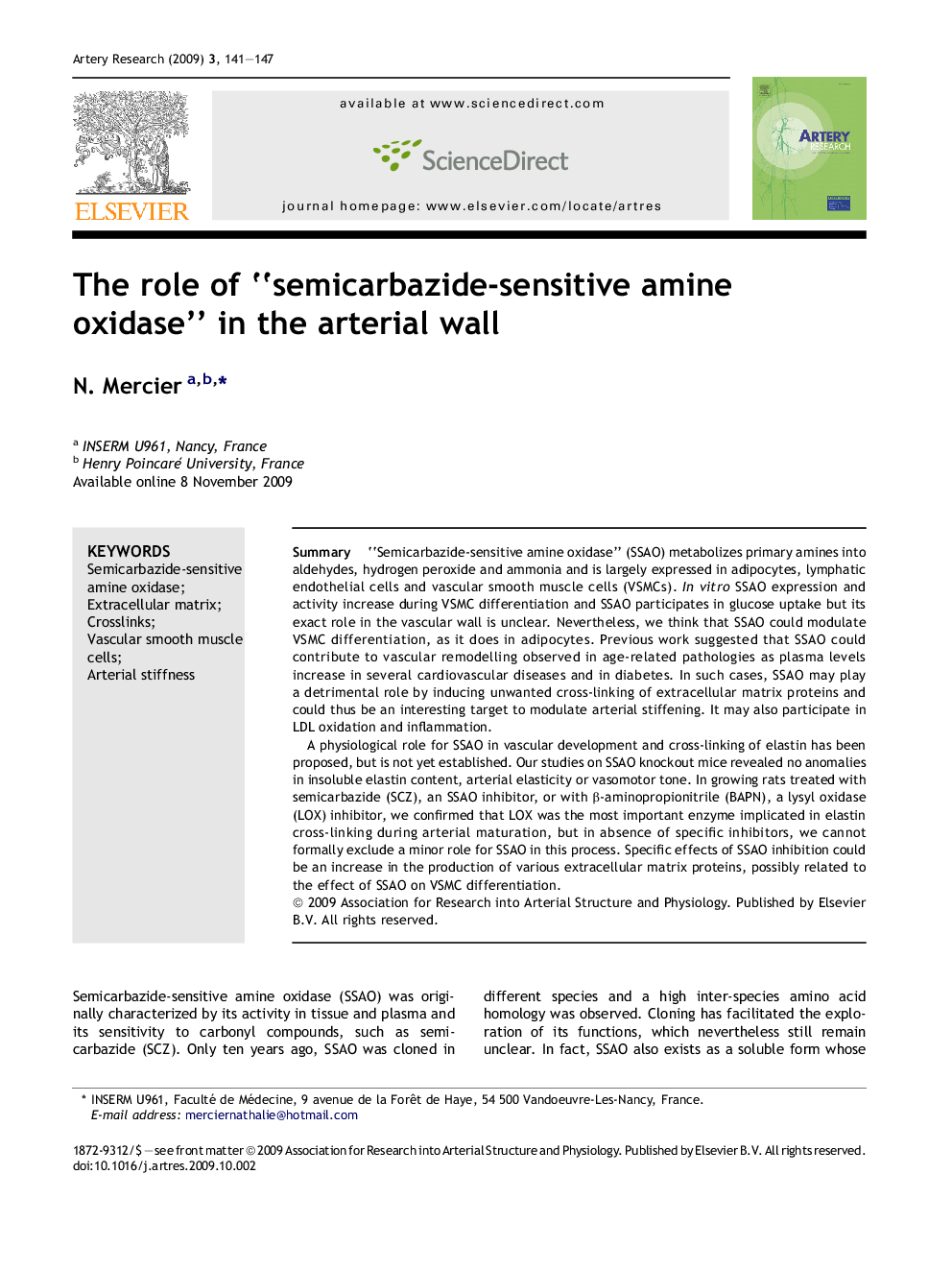| Article ID | Journal | Published Year | Pages | File Type |
|---|---|---|---|---|
| 2892409 | Artery Research | 2009 | 7 Pages |
Summary“Semicarbazide-sensitive amine oxidase” (SSAO) metabolizes primary amines into aldehydes, hydrogen peroxide and ammonia and is largely expressed in adipocytes, lymphatic endothelial cells and vascular smooth muscle cells (VSMCs). In vitro SSAO expression and activity increase during VSMC differentiation and SSAO participates in glucose uptake but its exact role in the vascular wall is unclear. Nevertheless, we think that SSAO could modulate VSMC differentiation, as it does in adipocytes. Previous work suggested that SSAO could contribute to vascular remodelling observed in age-related pathologies as plasma levels increase in several cardiovascular diseases and in diabetes. In such cases, SSAO may play a detrimental role by inducing unwanted cross-linking of extracellular matrix proteins and could thus be an interesting target to modulate arterial stiffening. It may also participate in LDL oxidation and inflammation.A physiological role for SSAO in vascular development and cross-linking of elastin has been proposed, but is not yet established. Our studies on SSAO knockout mice revealed no anomalies in insoluble elastin content, arterial elasticity or vasomotor tone. In growing rats treated with semicarbazide (SCZ), an SSAO inhibitor, or with β-aminopropionitrile (BAPN), a lysyl oxidase (LOX) inhibitor, we confirmed that LOX was the most important enzyme implicated in elastin cross-linking during arterial maturation, but in absence of specific inhibitors, we cannot formally exclude a minor role for SSAO in this process. Specific effects of SSAO inhibition could be an increase in the production of various extracellular matrix proteins, possibly related to the effect of SSAO on VSMC differentiation.
